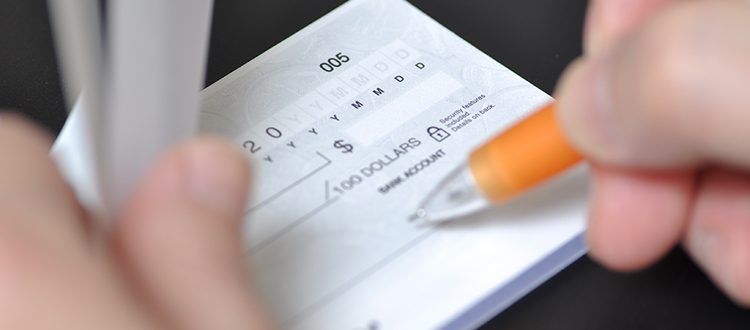Cut a Check: What Checks Have Taught Us About Payments
We often hear businesses talk about the need to reduce (or better yet, eliminate) friction from the consumer buying experience. The reasons for this are pretty obvious: less friction leads to higher purchase completion rates, which leads to higher customer satisfaction, repeat purchases, and more revenue. However, optimizing for the ideal customer experience is an evasive task. For starters, reducing buyer-side friction can often lead to poorer fraud controls, more expensive transactions, and less data on the consumer.
Paying for Stuff Is Easy… And Getting Easier
For many years, credit cards have solved most buyer-side friction. With a credit card, the consumer simply swipes (or taps) and walks away. Online, a shopper only has to enter their credit card information once to enable one- or two-click purchasing on a wide variety of ecommerce websites. Talk about friction-free; the merchant does nearly nothing and instantly receives a promise to be paid. The credit card networks handle all traffic control, data validation, and settlement.
All other forms of merchant payment pale in comparison. Bank transfers are risky because of the lack of a real-time authorization mechanism, the inherent delay of the ACH network, and because they can’t be processed without a long list of account information, making them increasingly impractical. There’s cash of course, but it’s inconvenient to handle and lacks security. And then there’s checks. Those little rectangles of paper actually create an unbelievable amount of friction for both consumers and merchants when used to pay for goods or services.
What’s the Most Painless Payout Method?
But now let’s consider the reverse scenario. What if you are a company that must disburse payments? Is there a particular payout method that rises above the rest as a frictionless distribution option?
Let’s consider the options. For better or for worse, all the attributes of the aforementioned payment types hold true when paying out. Bank account transfers are cumbersome and error prone because they require the payer to know the account information of the recipient. Cash is expensive to handle and is not secure (as mentioned earlier). But what if you’re using checks as a means to disburse payments? Companies do it all the time when they have to pay a handful of other businesses like suppliers, vendors, and partners; but is this really a viable payment method for businesses that need to pay massive communities of individuals? Think about insurance companies paying claims, or retailers and manufacturers paying rebates; governments paying subsidies or tax refunds, and businesses paying independent contractors or consultants. Many of these transactions are still done through checks. And it’s not just old, traditional businesses that use this payout method; contemporary companies—even global technology oriented businesses—cut an inordinate number of costly and inefficient checks in order to pay individuals. The question is, why?
The Big Problem That Checks Solve
Ironically, when it comes to handling large scale payouts, checks solve a rather big problem. First, the business writing the check doesn’t need to know a whole lot about the payee, just his or her name and possibly a mailing address (in fact, it doesn’t even need to be the person’s residential address. Any address that the postal service or UPS can deliver to works). No routing or account numbers, social security numbers, or photo IDs are necessary. This is because the check itself solves the primary task: the company fulfilling its obligation to pay the individual. Checks leave the ‘how’ and ‘when’ of the payment up to the payee, who can decide how they want to use that check (deposit it to their bank account, cash it out) and when it’s convenient for them to take possession of the money (provided it’s within the legal timeframe). Above all, it delivers the instant gratification to the payee that they’ve been paid what they were owed.
That being said, checks still have some pretty obvious limitations due to the very physical nature of the instrument. Paper handling, escheatment, lost delivery; checks can cause some big administrative hassles! If only there was a mechanism that could combine the ease and uniformity of paying with a check, while empowering the payee to determine when and how he wishes to convert it to real money.
In this perfect scenario, the payer:
- need only know the payee’s name and email address.
- wouldn’t need to know in what country the payee resides or whether he or she has a bank account.
- could pay in his or her preferred currency rather than the preferred currency of the payee.
- wouldn’t have to worry about payment reconciliation or administration.
What’s more, the payee:
- wouldn’t be required to sign up for a third party service, disclose a bunch of personal information, or establish and memorize a unique user ID and password.
- would enjoy instant payment gratification.
- would be able to collect their funds via their preferred payment type and currency, almost anywhere in the world.
- would have total transparency into the costs, f/x rates, and timing of the payment.
Sounds too good to be true, I know; that’s because any one payout method could never handle this sort of flawless execution. Only a platform could handle this kind of friction-free transaction approach. And that’s why we built Hyperwallet, a PayPal service—to enable companies to focus on who they are paying, rather than how they are paying them.


